
River Station Area/Southern Pacific Railroad
Area between North Broadway on the west, North Spring Street on the east, northward to the Los Angeles River and the southeasterly corner of Elysian Park – map
Declared: 6/16/71
Tongva village, site of the Zanja Madre, Southern Pacific railyard, brownfield, art installation, state park – this 32-acre plot of land has seen more than a few incarnations in its history, with at least one more in store.
Area between North Broadway on the west, North Spring Street on the east, northward to the Los Angeles River and the southeasterly corner of Elysian Park – map
Declared: 6/16/71
Tongva village, site of the Zanja Madre, Southern Pacific railyard, brownfield, art installation, state park – this 32-acre plot of land has seen more than a few incarnations in its history, with at least one more in store.

In Los Angeles’s pre-Spanish days, this and the surrounding area was crawling with Tongva Indians, who had one of their larger villages, Yang-na, in or around here. The Tongva (later renamed the Gabrieleño) remained in the area even up to the 1830s, about fifty years after the Spanish founding of the city. The Spaniards, within weeks of establishing the settlement, began using the new pueblo’s primary irrigation system, the Zanja Madre (“mother ditch”). Two channels of the zanja ultimately flowed through the Cornfield. (The zanja system was the city’s primary source of domestic and irrigation water until 1904).
By the time 1873 rolled around and the Southern Pacific Railroad got the rights for a freight house and depot on the land, the site marked the western end of L.A.’s Chinatown. The River Station was the city’s first transcontinental railroad depot and freight yard.
After 1876, the Southern Pacific spread out to the northern part of the Cornfield, building a new passenger depot along with the Pacific Hotel. Trains continued to stop at River Station until 1915. It was for the railroading stage in the land’s history that it was designated Historic-Cultural Landmark No. 82 in 1971. At that time, there were still, of course, many remnants of the 19th-century railyard – “freight yards, warehouses, tracks, switch houses, docks and cobblestone pavement.” Now, that’s all gone – except this old building at the southern end of the site (below), near the Capitol Milling Company. I would imagine this was some sort of old freight house, no?
The railyard was sold and abandoned in 1992. Nearly a decade later, in September 2001, Governor Gray Davis signed a bill authorizing the Department of Parks and Recreation to “acquire, assess, clean up, plan, design, build and maintain the 32-acre parcel.” While the agency appointed a committee to figure out how to accomplish this, artist Lauren Bon created the art project Not a Cornfield, “a living sculpture in the form of a field of corn.” She had 1,500 truckloads of dirt brought in, and then planted a million seeds. (Go to the Not a Cornfield website. You can see tons of photos and videos of not only the art project, but also of the history of the site.) They grew a lot of corn, then harvested it.
This sneeze-worthy area below (the big circle) is called Cornhenge, another art project by Lauren Bon, launched in November, 2006. An onsite sign reads, “This metabolic sculpture incorporates a variety of native flora commingling with 31 hay bales gathered during the Not A Cornfield harvest.” It’s got marigolds and everything.
And here's a Cornhenge close-up.
Today the site is the Los Angeles State Historic Park, although its current incarnation is temporary. Some green grass, dirt, a bunch of scrub, and Cornhenge.
Here's a shot looking up the path through Cornhenge. Look at this picture, and then compare/contrast with the shot below it (from L.A.'s Department of City Planing site).
Here's a shot looking up the path through Cornhenge. Look at this picture, and then compare/contrast with the shot below it (from L.A.'s Department of City Planing site).
June of this year saw the state’s contract being approved to bring on the design team of Hargreaves Associates to begin work on building a new State Historic Park. The firm won a competition last year with a design that “provides a plaza for gatherings and events, gardens and recreational spaces, pedestrian and fauna bridges, wetlands and interpretive centers.” This is set to be realized in 2010.
What’s a “fauna bridge”?
What’s a “fauna bridge”?
One note: while I know there are lots of folks living in the area, the couple of days I visited here, the (temporary) park was sort of empty with just a handful of people hanging out. That’s fine, but I did notice that it seemed most of the park-goers those days had driven there. My guess is the major obstacle for the city, the state, and Hargreaves is making the park accessible. Maybe the adjacent Gold Line stop will help, but I’m not so sure.
The Not a Cornfield site and the Cornfield State Park Advisory Committee’s April 2003 report, "A Unified Vision for Cornfield State Park", were huge helps with this post, and there were some others, but one of the best sources I found on the history of the Cornfield is Michael Dear’s article, “Eye of the Beholder”, on USC’s LA School of Urbanism page. Thanks, Michael.
The Not a Cornfield site and the Cornfield State Park Advisory Committee’s April 2003 report, "A Unified Vision for Cornfield State Park", were huge helps with this post, and there were some others, but one of the best sources I found on the history of the Cornfield is Michael Dear’s article, “Eye of the Beholder”, on USC’s LA School of Urbanism page. Thanks, Michael.
Up next: Boyle-Barmore House

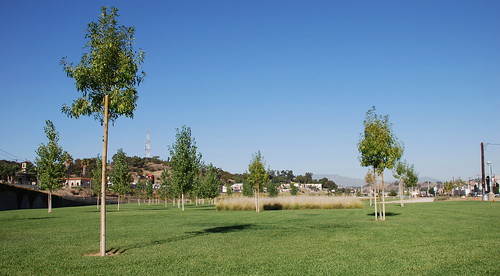
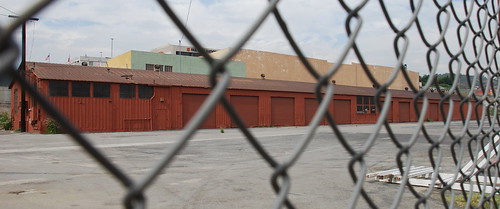

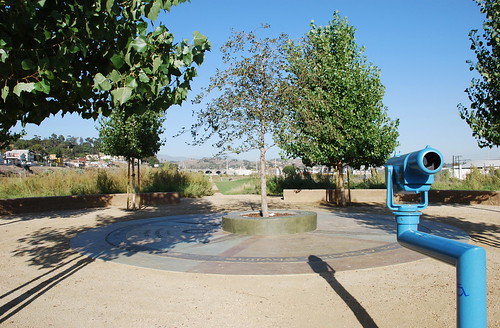
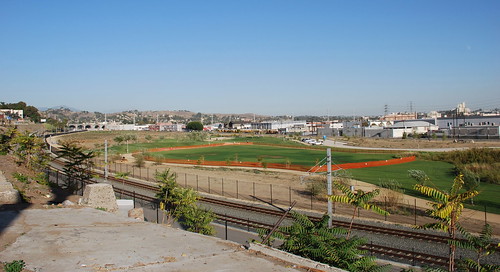

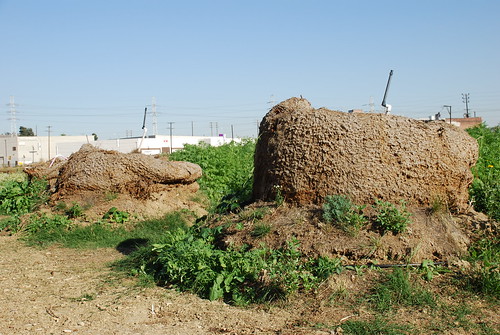

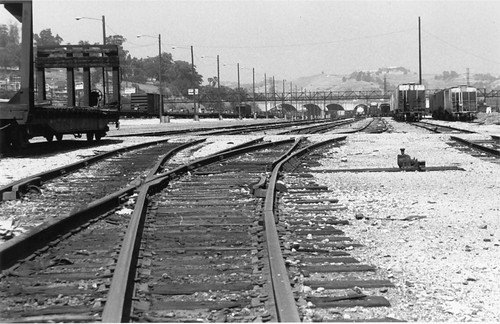
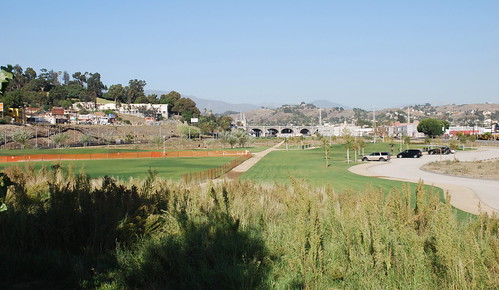
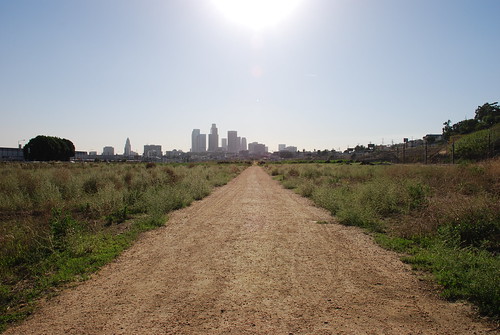

7 comments:
I'd like to see a Gold Line Stop within the park. Although one can walk from the Chinatown Station to the park, most people would rather walk IN the park than TO the park.
Southbound on the Gold Line one can see a short (20 ft?) brickwork section of the Zanja Madre when approaching the Chinatown station.
Thanks very much, anonymous. I love tips like that. I'll go look for it.
Ive always seen and wondered about that reb painted tin looking building, today it looks to just house the citys school buses
Cool find. This post made me a believer. I have lived/worked out of one of the buildings in your pics here since 06, and learned a ton about the history of the City in relation to this area, and I have to say, Floyd's information is very accurate. We'll have to have you over sometime to look at all the old photos/maps/stories we've collected. Take care, James
Thanks, James. I'd love to see whatever you've collected about the area.
Hi Floyd, first off I love your blog. Second, my grandmother had a friend that owned a little hot dog and hamburger stand in this very spot. It was called Millie's. Millie had the shop up until the city bought her out to make the park that is now located there. I'm 26, and I remember going to visit the stand when I was very young. I was hoping I'd spot the stand in the old photos but I didn't. Thanks again for a great blog!!
Post a Comment